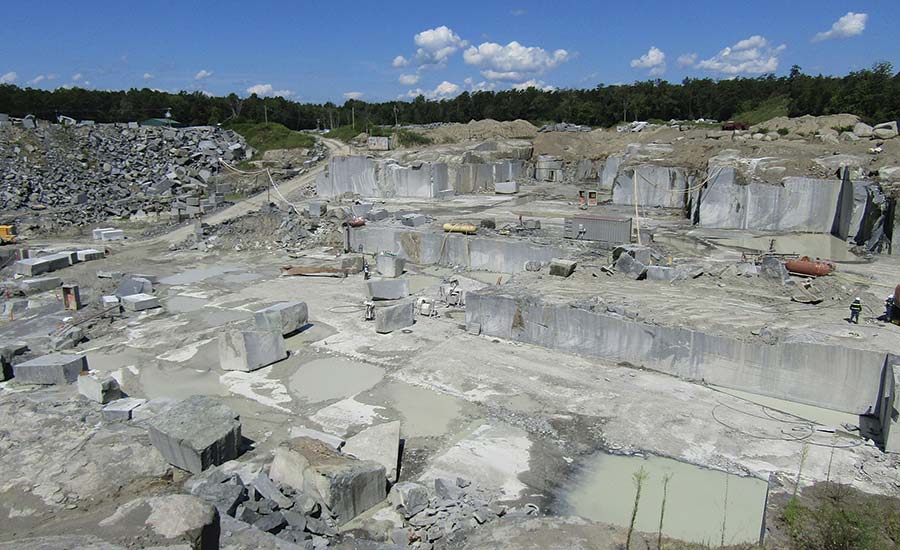Granite Quarries in South Africa Marvels: Checking Out the Quarry Landscape
Unearthing the Rich History and Sustainable Practices of Granite Quarrying
As we depend on the precipice of revealing the complex tapestry of granite quarrying, a trip via time discloses not just the physical act of extracting stone but also the social and historic relevance woven right into the really textile of this method. From the old beginnings that laid the structure for contemporary quarrying strategies to the sustainable methods that are shaping the future of this market, each sculpt mark on granite surface areas tells a tale waiting to be uncovered (granite quarries in south africa). The legacy of granite quarrying extends much past mere extraction; it is a testimony to human ingenuity, durability, and the long-lasting allure of this impressive rock
Ancient Origins of Granite Quarrying
Dating back to old people, the method of quarrying granite has been an indispensable part of human background and architectural development. The earliest proof of granite quarrying go back to old Egypt, where substantial pyramids and complex sculptures were crafted from this durable rock. The Egyptians used primitive tools to extract granite blocks from quarries, showcasing the importance of this product in their monumental buildings.
Progressing in background, the Greeks likewise made substantial payments to the quarrying of granite. The Greeks used granite in different architectural wonders, such as holy places and statuaries, demonstrating their skill in shaping and sculpting this durable stone. The Romans additionally improved the methods of quarrying granite, employing sophisticated tools like blades and hammers to remove and form granite for their iconic structures.
Through the centuries, the method of quarrying granite has actually advanced, with contemporary technologies enhancing efficiency while keeping the timeless appeal of this natural rock - granite quarries in south africa. From old civilizations to contemporary builders, the legacy of granite quarrying remains to form our globe
Development of Quarrying Methods
The development of quarrying strategies has actually been marked by a continuous development towards higher efficiency and accuracy in drawing out granite. From the fundamental methods utilized by our ancestors to the sophisticated technologies utilized in modern-day quarrying operations, the sector has actually undergone significant advancements. Early quarrying methods involved hand-operated labor with fundamental devices such as knives, hammers, and wedges to extract granite blocks from the earth. As civilizations advanced, techniques like fire-setting and primitive explosives were introduced to promote the removal process.
In even more recent times, the development of equipment reinvented the quarrying industry, allowing quicker removal rates and boosted productivity. Technologies such as diamond cable saws, high-pressure water jets, and pneumatically-driven drills have ended up being standard in contemporary quarries, permitting specific cutting and decreased waste. Moreover, innovations in computer-controlled equipment and 3D modeling have enhanced quarrying procedures, bring about minimal environmental effect and enhanced sustainability techniques. As the demand for granite remains to increase, the development of quarrying strategies continues to be indispensable to conference sector requires successfully and sustainably.
Social Relevance of Granite
Granite holds an extensive cultural value across numerous people due to its enduring visibility in architectural work of arts and admired monoliths. The cultural significance of granite prolongs beyond its physical qualities; it embodies strength, stability, and eternity, making it a symbol of withstanding legacies and customs.

Sustainable Practices in Quarrying
Among the abundant history of granite quarrying and its cultural value lies an expanding focus on sustainable techniques within the market. As environmental recognition and worries about source exhaustion have enhanced worldwide, the quarrying sector has actually progressively welcomed sustainable approaches to lessen its effect on the setting and surrounding areas.

Furthermore, reclamation and recovery of quarry websites post-extraction are integral to lasting techniques. By recovering quarried locations to an all-natural or useful state, such as developing wild animals habitats or leisure spaces, quarriers can offset the environmental impact of their procedures and add positively to the local ecosystem.
Legacy of Granite Quarrying
With a historic background steeped in craftsmanship and commercial progression, what withstanding effect has granite quarrying left on the landscape of modern culture? The heritage of granite quarrying goes beyond mere removal techniques; it has shaped building marvels, urban landscapes, and social heritage worldwide. The long lasting nature of granite has made it a preferred selection for monuments, buildings, and framework, standing as a testament to the skill and virtuosity of quarry workers throughout generations.
In addition, the economic footprint of great site granite quarrying can not be forgotten. The market remains to give employment opportunities and drive neighborhood economic climates in areas where granite removal is prevalent. It has actually also stimulated technological advancements in quarrying methods and equipment, causing much more reliable and sustainable techniques.
In regards to sustainability, the legacy of granite quarrying consists of initiatives to mitigate environmental influences through improvement jobs and liable resource administration. By stabilizing financial interests with environmental stewardship, the market makes every effort to ensure that future generations can continue to take advantage of this long-lasting all-natural source.
Verdict
